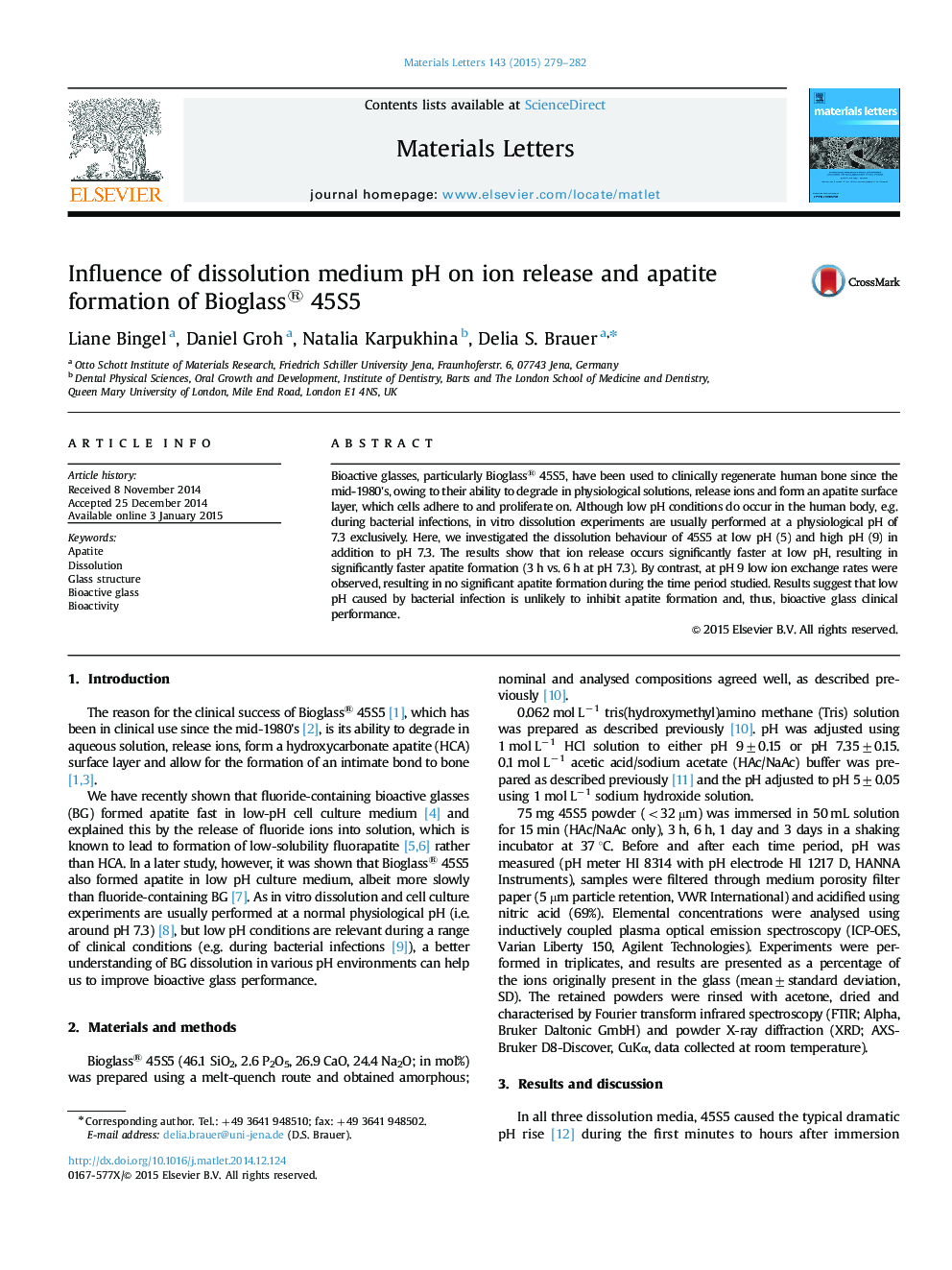| Article ID | Journal | Published Year | Pages | File Type |
|---|---|---|---|---|
| 1642804 | Materials Letters | 2015 | 4 Pages |
•Enhanced ion release of Bioglass® 45S5 at low pH.•Enhanced apatite formation of Bioglass® 45S5 at low pH.•Negligible apatite formation of Bioglass® 45S5 at pH 9.
Bioactive glasses, particularly Bioglass® 45S5, have been used to clinically regenerate human bone since the mid-1980׳s, owing to their ability to degrade in physiological solutions, release ions and form an apatite surface layer, which cells adhere to and proliferate on. Although low pH conditions do occur in the human body, e.g. during bacterial infections, in vitro dissolution experiments are usually performed at a physiological pH of 7.3 exclusively. Here, we investigated the dissolution behaviour of 45S5 at low pH (5) and high pH (9) in addition to pH 7.3. The results show that ion release occurs significantly faster at low pH, resulting in significantly faster apatite formation (3 h vs. 6 h at pH 7.3). By contrast, at pH 9 low ion exchange rates were observed, resulting in no significant apatite formation during the time period studied. Results suggest that low pH caused by bacterial infection is unlikely to inhibit apatite formation and, thus, bioactive glass clinical performance.
